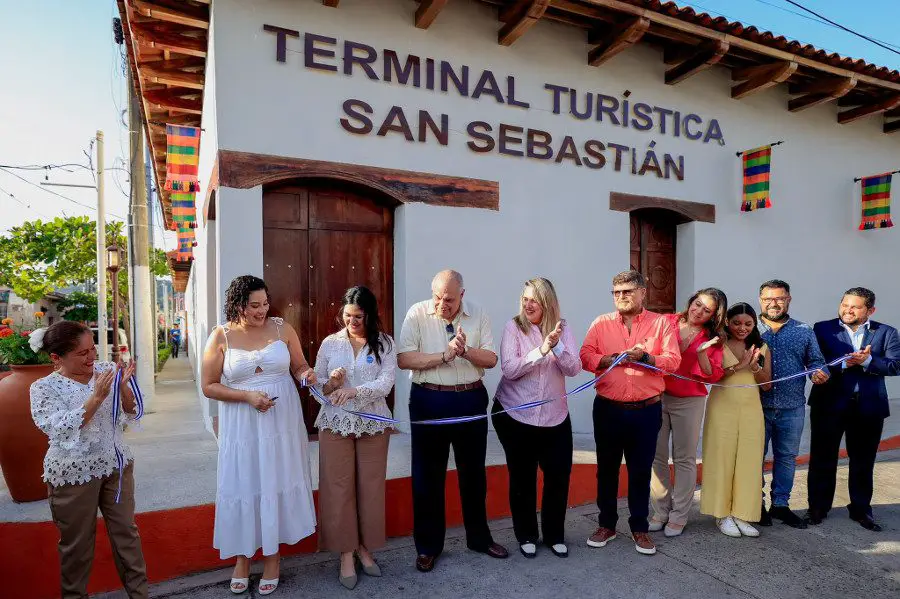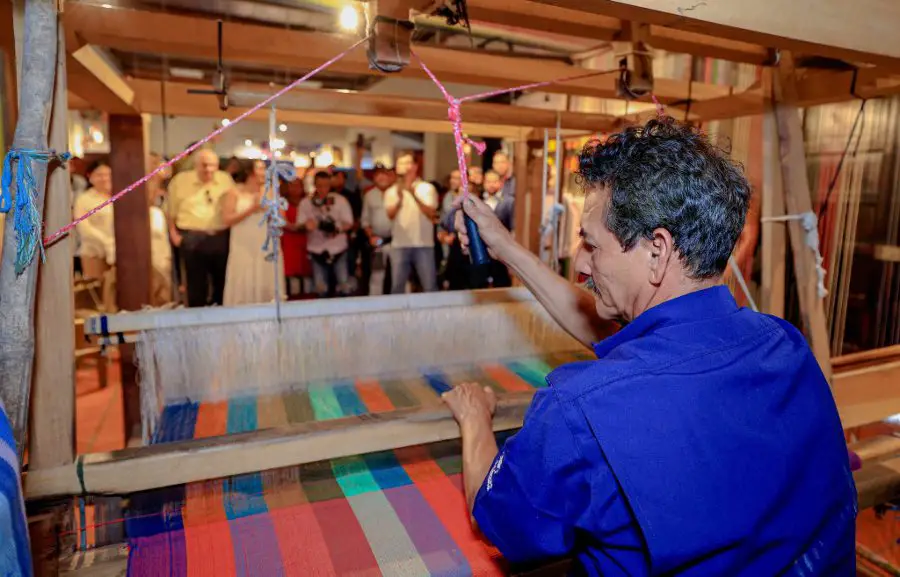The Salvadoran Tourism Institute (ISTU) has officially inaugurated the San Sebastián Tourist Terminal—a vibrant new hub poised to become a symbol of identity and progress for the region.
The new terminal iss trategically located in the center of town near the iconic San Sebastián Mártir Church, the traditional portals, and the Octavio Burgos Museum, the terminal is designed as a gateway into the rich heritage of the area.
SEE ALSO: Explore San Sebastian El Salvador: Colorful Town of Crafts, Culture, and Colonial Charm
According to the Presidential Press Office, “its location makes it an ideal starting point for visitors to explore San Sebastián’s cultural legacy.”
The San Sebastian tourist terminal features several key attractions: an exhibition space showing off the town’s famous looms and handmade hammocks, a modern amphitheater for cultural events, a kids’ playroom, and a nursing room.
“In San Sebastián, every thread tells a story. Tradition and creativity intertwine to create unique pieces filled with color and Salvadoran culture.” Salvadoran Tourism Institute (ISTU).
According to Salvadoran authorities, this facility stands as a functional and symbolic tribute to San Sebastián’s artisanal roots.
Built with an investment of $484,000 in its first phase and over $400,000 in its second phase, the project was financed by the Inter-American Development Bank (IDB).
By August 2024, the first phase had reached 90% completion, and the final vision has now come to life.
During the inauguration, IDB’s representative in El Salvador, Olga Gómez, highlighted the terminal’s multifaceted purpose, calling it a project that weaves together tourism, innovation, social impact, and economic opportunity.

Designated as a Built Cultural Heritage Site, the terminal will now be part of ISTU’s national network of tourism parks.
Tourism Minister Morena Valdez emphasized ongoing efforts to promote El Salvador as a multi-destination country, and the new terminal is a clear step in that direction, offering both a cultural experience and a boost to local development.
With this new landmark, San Sebastián is not just preserving its traditions—it’s inviting the world to rediscover them.




